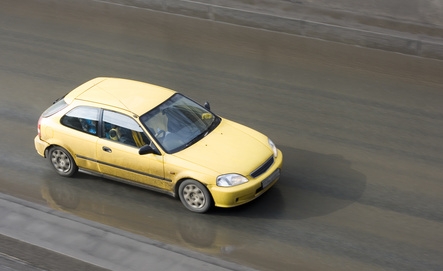
Car radiators contain a lot of pressure as they have to endure high temperatures whenever the car is in operation. As the radiator is used, it can form cracks. You will most likely find these cracks in the plastic portion of the end tank or on the inlet-outlet nozzles. Nylon plastic can be successfully welded with hot plastic welding so that it holds up under the pressure and heat that it must eventually endure.
Set your vehicle to park or neutral, with the emergency brake set. Raise the hood, and remove the negative battery cable as well as the radiator cap. Find and open the radiator drain petcock valve with a wrench. Allow the coolant to drain out into a pan. Remove the transmission coolant lines with the fuel line wrench. Loosen the upper and lower hose clamps with a slot screwdriver and move the hoses back away from the radiator.
Take off the bolts that hold the fan shroud in place to the radiator with a socket wrench. Remove the radiator mounting bolts with a socket wrench. Remove the radiator by pulling it up and out of the grill compartment. Put the radiator on a work bench, with the crack facing upward.
Using a hand towel, clean out the cracked seam with plastic cleaner. Ensure that all accumulated dirt and debris is removed. Take a V-grinding bit and connect it to a drill motor and grind a V-channel in the crack. Do this for the crack's entire length. With a hand towel, wipe off the shavings. Using an airless plastic welder, heat the crack area until the plastic on the radiator has a glossy color.
Carefully move the plastic welding rod directly over the crack. Do this on one end and allow it to melt and fall into the V-shaped groove. Move the welder to the other end of the crack and repeat. Melt additional plastic over the crack after laying down a heavy bead over the crack. Allow a large portion of welded plastic to build up. After you are done, let the area air dry.
Reinsert the radiator into the grill compartment and replace the mounting bolts in the radiator. With a socket wrench, re-tighten the bolts. Next, place the shroud back into its mount. Reinsert the bolts into their respective holes and use a socket wrench to tighten them accordingly. Attach the transmission coolant lines, and using a fuel line wrench, tighten the nuts. Re-attach the upper and lower radiator hoses and using a slot screwdriver, tighten the hose clamps. Fill up the radiator with fresh coolant after closing the petcock valve.
Tighten the radiator cap and re-attach the negative battery cable with a socket wrench. Start up the car and warm it up to operating temperature. The crack should now be fixed.